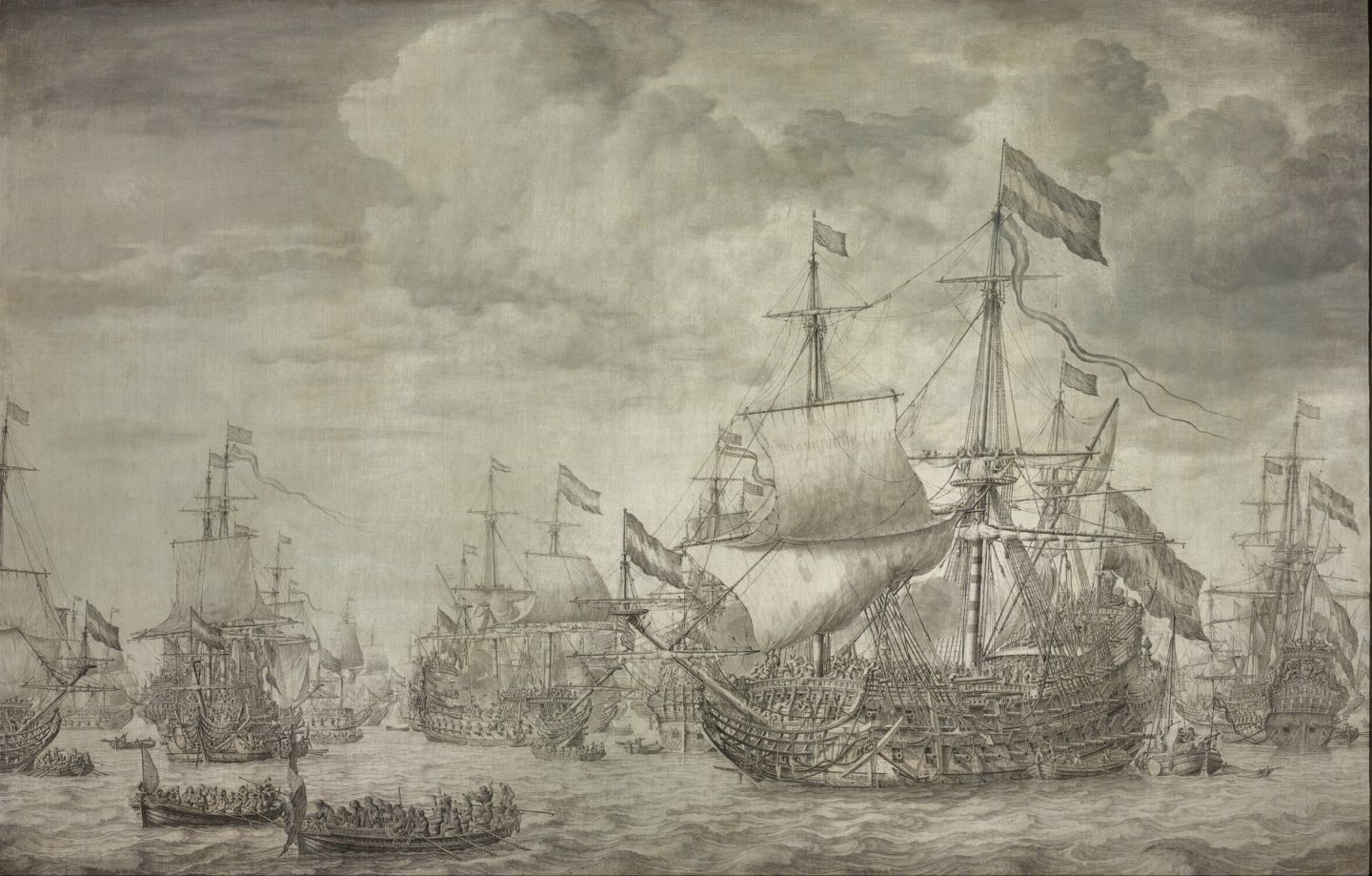
Pen-and-ink work by Willem van de Velde the Elder
The pen-and-ink drawings by the seventeenth-century artist Willem van de Velde the Elder were already famous during his lifetime. None of his many followers achieved the master’s quality, neither in terms of detail nor in refinement and accuracy. Every detail is spot-on.
One of the most important painters of the 17th century
Dutch maritime painting in the Golden Age was generally of a very high standard and in the international vanguard. The wealthy citizenry, who owed their prosperity largely to ships and shipping, were particularly interested in this kind of art and were both willing to pay well for it and capable of doing so. Willem van de Velde the Elder was one of the most important and most famous maritime painters. He worked a lot on commission and was very business-minded. He was first the official painter for the admiralties, for instance, and later – at the time of the Third Anglo-Dutch War (1672-1674) – he entered the service of King Charles II of England, for whom he produced paintings of British ships and naval battles. His works are realistic and often depict actual moments during naval battles. However, this huge pen-and-ink drawing from 1668 is a fictional scene, although it does show existing ships. Its principal subject is the Eendracht, the flagship of the fleet, which had sunk three years earlier at the Battle of Lowestoft on 13 June 1665 with the loss of almost all on board, including Lieutenant-Admiral Jacob van Wassenaer Obdam. The ship can be seen from its port side, in the centre. Appropriately, the sloop right at the front bears the Van Wassenaer coat of arms on the transom.
The pinnacle of quality with an exceptional eye for detail
Van de Velde’s works, and this piece in particular, are of the very highest quality. This applies not only to the selection of the composition but also to the exceptional detailing. To depict the ships so precisely, Van de Velde must have observed them at close quarters and known exactly how they functioned. It is very likely that Van de Velde composed this painting using a series of sketches as the basis. It is known that he regularly went along on the vessels on instructions from the admiralty to study the course of the fighting on the spot. That is why several works are known that show the small galleon from which Van de Velde sketched the naval battles.
He was first the official painter of the admiralties and later - at the time of the Third Anglo-Dutch War (1672-1674) - in the service of King Charles II of England, for whom he made paintings of British ships and naval battles. His works are realistic and often depict actual moments during naval battles. However, this huge pen drawing from 1668 is a fictional scene, although it does show existing ships.